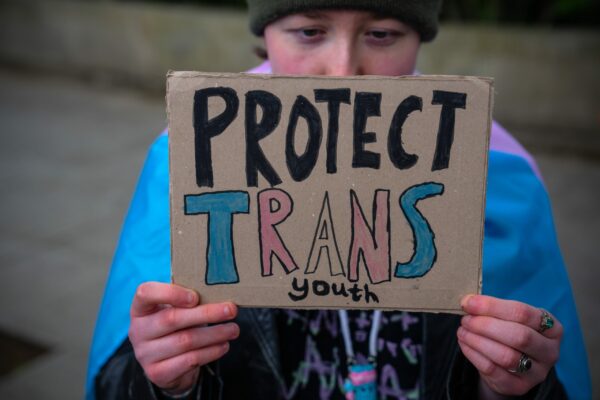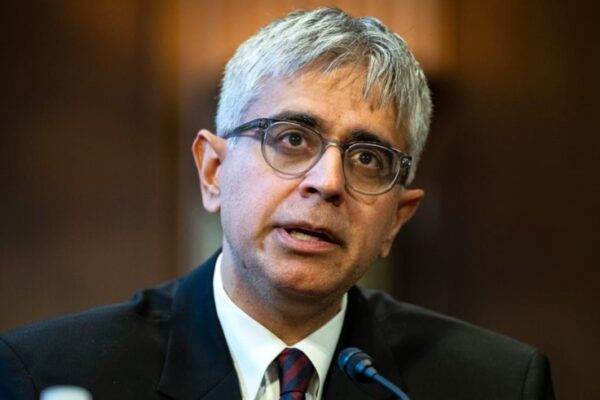Idaho County Will Publish Everyone’s Ballots to Combat Mistrust…

In the aftermath of the 2020 election, as supporters of Donald J. Trump scoured the nation for any malfeasance that might explain his defeat, the county clerk’s office in Boise, Idaho, was inundated with queries.
Voters wanted to know who had built the county’s voting machines. What software were they using? Did any parts came from China? Were the machines vulnerable to hacking? Outlandish claims were spreading in conservative circles across the country that votes had been discarded or altered in a coordinated effort to rig the election.
Trent Tripple, a Republican who had worked in the Ada County clerk’s office and was elected to lead it starting last year, said he was convinced there was a solution that could help people gain confidence in their elections once more: It was time to publish the ballots for everyone to see.
“I was tired of everybody questioning elections in Idaho,” Mr. Tripple said. “The idea is to get the vast majority of people back into this bucket of trusting elections.”
In the coming days, Mr. Tripple’s pioneering idea will be put into effect for the first time in a general election. All 271,186 ballots cast in Ada County in the Nov. 5 election will be published on an interactive website, along with details of exactly how each ballot was tabulated.
Anyone with an internet connection can now become an auditor, using the Ballot Verifier program to filter ballots by specific races, individual precincts or ballots that were cast by mail. The ballots do not carry identifying information, but some voters this year — Mr. Tripple included — doodled or otherwise marked their ballots so they could later find them when published. One person reported writing in the serial number of a $2 bill.
The extraordinary effort is being watched by elections officials around the nation who are looking for ways to restore confidence among voters amid years of distrust, stoked in large part by Mr. Trump’s false claims about a stolen election in 2020. This year, after Mr. Trump won a new term, some Democrats joined in spreading false theories about millions of “missing” ballots early on in the counting process, although such allegations did not gain traction among party leaders.
This is not the first time that a county has made all its ballots available for the public to review, and some election offices have released data on how ballots were tabulated. But many have avoided such disclosures, and doing both together was unique. Mr. Tripple said that by publishing both data sets side by side and making them easily searchable online is a way to build confidence that ballots are being counted appropriately.
In the aftermath of the 2020 election, distrust among Mr. Trump’s supporters culminated in an attack on the U.S. Capitol in January 2021 in an attempt to block certification of the results. False allegations of problems with voting machines led to lawsuits. Fox News eventually agreed to pay $787.5 million to resolve a defamation suit filed by Dominion Voting Systems over misinformation about the company’s voting equipment.
Before this year’s election, only 28 percent of Republicans expressed confidence that the vote would be accurately cast and counted, according to a Gallup poll, while 84 percent of Democrats said they felt confident.
In the Boise area, one of the voters who was skeptical of election procedures after the 2020 election was Tim O’Donnell, who had a background in software development and became interested in the technology and procedures of elections after the 2020 result. Mr. O’Donnell, a Republican, said he began networking with people in Idaho and across the country, swapping stories and rumors as citizens tried to investigate their own local voting systems.
Some of the discussion focused on conspiracy theories, Mr. O’Donnell said, but he was eager to go behind the scenes. He filed records requests and arranged to take a tour of the Ada County elections office to understand more about how it functioned. He peppered the officials there with a range of questions. What he has come to learn, he said, is that with so many eyes on the process and the large number of protections in place, it would be difficult for anyone to cheat at any significant scale.
But for the sake of transparency, one thing he wanted to collect from election offices around the state was images of ballots and data on how each ballot was counted. In some places, he said, it was a struggle. Then, one day, Ada County called him to come test the Ballot Verifier tool that it had been quietly developing.
Mr. O’Donnell was impressed, saying it was the kind of program that should be available nationwide. If there is wrongdoing in an election, the tool could help expose it, he said. Or, if the election was managed appropriately, the tool had the power to build confidence among voters.
Election officials “get hammered with people accusing them of all kinds of stuff,” Mr. O’Donnell said. “They didn’t have to do this. But they are very concerned that people are not trusting elections. I applaud what they did.”
Democrats, too, have praised the expanded transparency. Erik Berg, the chair of the Ada County Democrats, said Mr. Tripple was trying to be proactive in solving a problem that was not the fault of the elections office.
“It’s kind of a shame that it has to be done,” Mr. Berg said. “But if it is what it takes to make sure people have faith in things, by all means. Hopefully it prevents people from spreading false information.”
One area of concern in the program is making sure ballot privacy is maintained. The Ada County effort will redact ballots in small precincts where few people voted so that deducing a single person’s vote would not be possible.
Kim Wyman, a Republican who formerly oversaw elections as secretary of state in nearby Washington State and later took an election-security role in the Biden administration, said she had some general concerns about publishing ballots. A poorly designed system could expose a voter’s identity, she said. She also worries that publication could help facilitate vote-buying, as someone seeking to ensure that a person votes in a certain way could see the finished ballot if it was uniquely marked.
“The concept is good,” Ms. Wyman said. “It’s just so important that it’s implemented well.”
In the Ada County elections office, the Ballot Verifier tool is one of several ways that Mr. Tripple has tried to make the process more transparent. The warehouse room where ballots are processed is filled with livestreaming cameras so the public can watch. He plans to add more cameras and to knock down walls, replacing them with glass so that people can better see everything that transpires in the vote count. When people contact his office with questions, he invites them to come see the work for themselves — or even to participate in the process.
For the Ballot Verifier program, Mr. Tripple worked with the Massachusetts-based software company Civera, which already managed election data for Idaho and other state and local governments. Tarrant County, Texas, joined Ada County in using Civera’s Ballot Verifier system for this year’s election, and many other state and county officials around the country — both Republican and Democrat — have signed on recently or expressed interest in adopting the program, said Adam Friedman, the founder and C.E.O. of Civera.
Mr. Friedman said that while the election-denial movement may have accelerated the development of these new tools, it was also a natural evolution. The cost of such technology has gone down, and the public is now focusing on digital tools to analyze everything from campaign finances to government checkbooks.
“It’s only a matter of time before that trend catches up to all sectors of government, including elections,” he said.
The post An Idaho County Will Publish Everyone’s Ballots to Combat Mistrust appeared first on New York Times.



